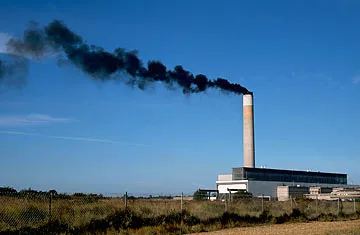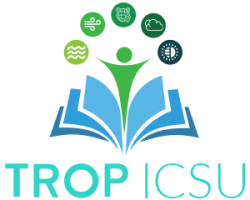The Greenhouse Effect

The Greenhouse Effect Overview Overview As a Middle School or High School Environmental Sciences teacher, you can use this lesson plan to teach about the Greenhouse Effect of the Earth’s atmosphere. This lesson plan will explain what are Greenhouse Gases (GHGs), what is the Global Warming Potential (GWP) of atmospheric Greenhouse Gases, and how increased […]
Infrared Spectra of Greenhouse Gases

Infrared Spectra of Greenhouse Gases Visualisation A visualisation to learn about the infrared (IR) spectra of different greenhouse gases and the effect of greenhouse gases on the Earth’s climate. Students will use the visualisation to view the IR spectra of different greenhouse gases, observe the amount of IR radiation absorbed for the current concentration of […]
Modes of Vibration in Greenhouse Gas Molecules

Modes of Vibration in Greenhouse Gas Molecules Video A micro-lecture that describes the vibrational modes of polyatomic molecules, how these modes determine whether the molecules are IR inactive or IR active and explains why most IR active polyatomic gas molecules are greenhouse gases. Students will learn about the various modes of vibration in polyatomic gas […]
Water Vapour Feedback and Earth’s Climate

Water Vapour Feedback and Earth’s Climate Reading A reading that explains the phase diagrams of water on Earth, Mars, and Venus and discusses the water vapor feedback mechanism in the atmospheres of these planets that influences the greenhouse effect. Students will be able to explain the concept of water vapor feedback on Earth’s atmosphere by […]
Data Visualization of GHG Emissions

Data Visualization of GHG Emissions Model/Simulation CAIT Climate Data Explorer by World Resources Institute (WRI) showcases the world’s top greenhouse gas-emitting countries with the latest global data available till the year 2013. This interactive chart can be used to explore it by country and by economic sector, showing how the top emitters have changed in […]
Algebra and Climate

Algebra and Climate Reading A teaching manual for instructors that integrates sustainability themes with mathematics topics for courses or projects in algebra, pre-calculus, or math for liberal arts. These modules, which include exercises and research questions, cover the following topics: Milkweed and Monarch Butterflies Wind Energy Greenhouse Gas Emissions Carbon Footprints and Population Growth About […]
A Single-layer Atmosphere Model to Explain Atmospheric Warming

A Single-layer Atmosphere Model to Explain Atmospheric Warming Reading A reading to learn about the energy balance of planet Earth and to understand atmospheric warming by using a single-layer atmosphere model. Students will learn about emissivity and absorptivity. Further, they will learn about the greenhouse effect of the atmosphere by calculating the temperature of a […]
Phase Diagrams and Earth’s Climate

Phase Diagrams and Earth’s Climate Video A video micro-lecture that describes the phase diagrams of water on Earth, Mars, and Venus. It also describes the water vapor feedback mechanism in the atmospheres of these planets that influences the greenhouse effect. Students will understand the stable phases of water at various temperatures on Earth. They will […]
Blackbody Spectrum

Blackbody Spectrum Model/Simulation A Model/Simulation and associated activity to explain how Planck’s Law can be used to plot blackbody curves of objects with different temperatures, the relationship between temperature and peak wavelengths in the electromagnetic spectrum, and the greenhouse effect of Earth’s atmosphere. Use this tool to help your students find answers to: How can […]
Black Carbon in the Atmosphere

Black Carbon in the Atmosphere Reading A reading that describes the effects of black carbon on the atmosphere and the climate system. This reading by Carl Zimmer for the Yale School of Forestry & Environmental Studies details the albedo effect of black carbon, how it affects cloud formation, and its warming and cooling effects of […]


